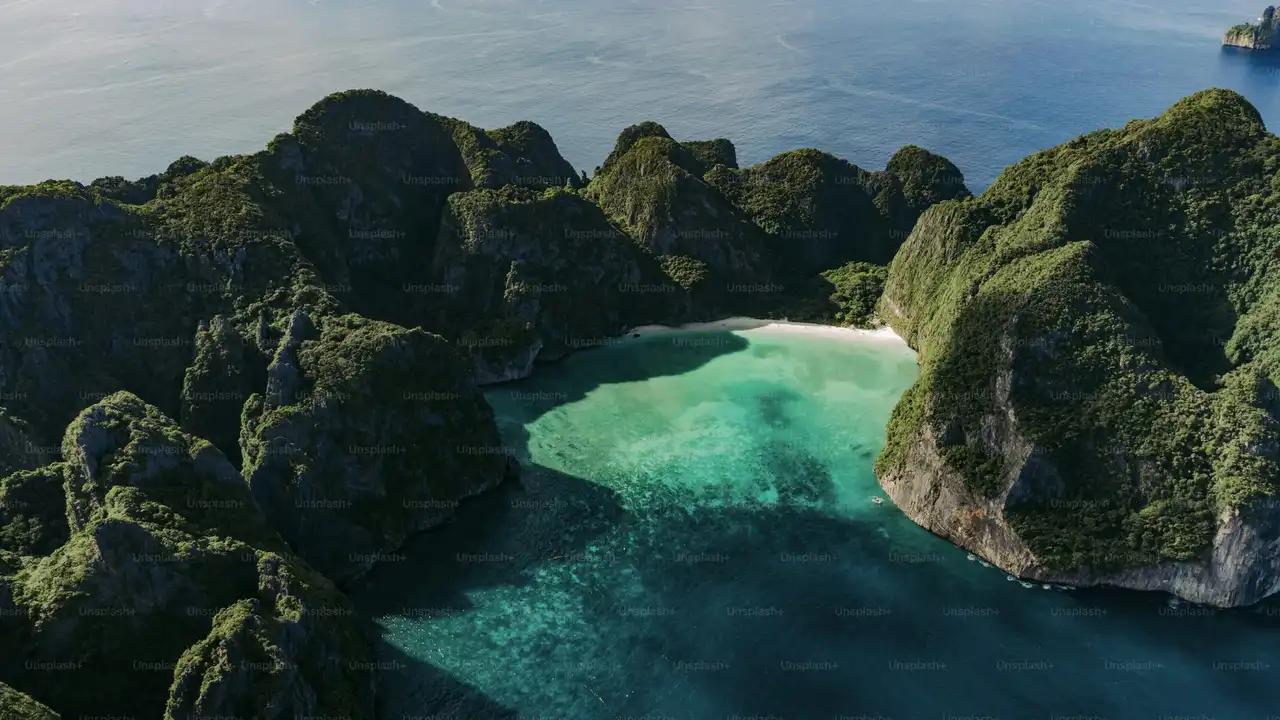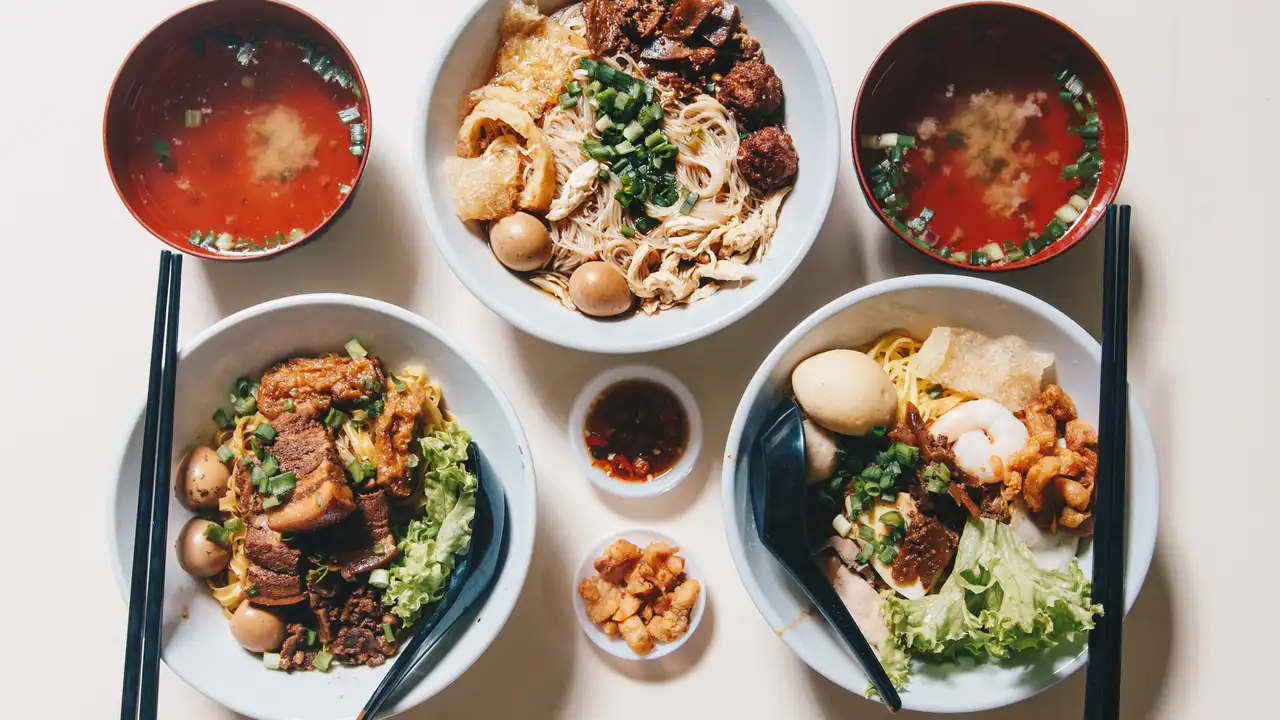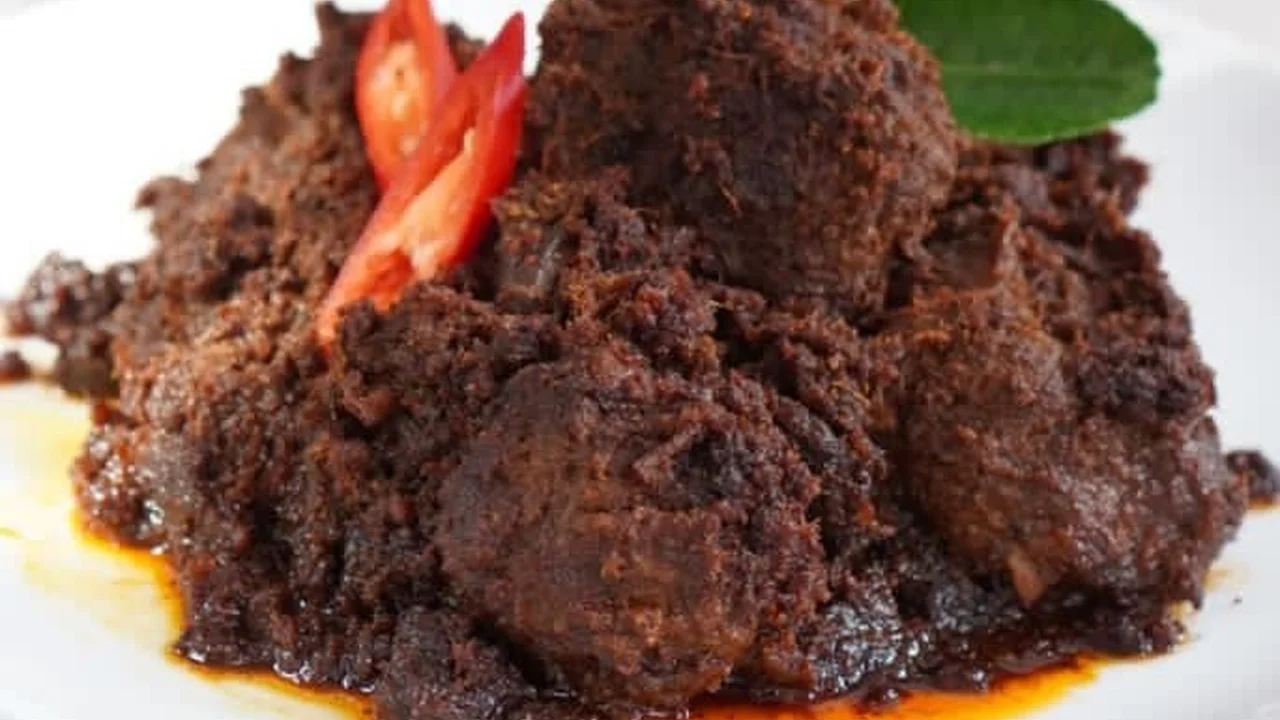Southeast Asia: Best Islands to Visit

Discovering Paradise Southeast Asia Island Hopping Guide
Hey there, fellow travel enthusiasts! Ready for an adventure? Southeast Asia is calling, and it's whispering sweet nothings about pristine beaches, turquoise waters, and vibrant cultures. But with thousands of islands to choose from, where do you even begin? Don't worry, I've got you covered. This guide is your passport to the best islands Southeast Asia has to offer, whether you're seeking relaxation, adventure, or a little bit of both.
Top Southeast Asia Islands for Every Traveler Best Beaches and Activities
Okay, let's dive into some seriously stunning islands. I'm going to break it down based on what kind of traveler you are. Think of it as your personalized island selector.
Phuket Thailand The Classic Choice for First Timers
Phuket is a classic for a reason. It's easy to get to, has incredible infrastructure, and offers a little something for everyone. From the bustling beaches of Patong to the serene shores of Kamala, you'll find your perfect spot. Plus, there are tons of activities, from snorkeling and diving to exploring the vibrant Phuket Town.
Activities: Sunbathing, swimming, snorkeling, diving, island hopping tours (Phi Phi Islands are a must!), exploring Phuket Town, enjoying the nightlife in Patong.
Where to Stay: Consider the Trisara for ultimate luxury, or the Surin Phuket for a stylish beachfront stay. For a more budget-friendly option, check out Kata Rocks (though still leaning towards the pricier side) or look for smaller guesthouses in quieter areas like Rawai.
Bali Indonesia The Island of Gods for Culture and Surf
Bali isn't just an island; it's an experience. Known as the "Island of Gods," Bali is rich in culture, spirituality, and natural beauty. From the rice terraces of Ubud to the surf breaks of Uluwatu, Bali will captivate your senses. Plus, the food is incredible!
Activities: Surfing, yoga, visiting temples (Uluwatu, Tanah Lot), exploring rice terraces (Tegallalang), hiking Mount Batur, experiencing Balinese culture (dance performances, cooking classes).
Where to Stay: For surfing, Uluwatu is your spot. For culture and relaxation, Ubud is ideal. Seminyak offers a blend of beach life and nightlife. The Four Seasons Resort Bali at Sayan in Ubud is a splurge-worthy experience. For a more budget-conscious option, look at smaller villas and guesthouses in Canggu or Ubud.
Langkawi Malaysia Duty Free Paradise for Relaxation and Nature
Langkawi is a duty-free island in Malaysia, making it a great option for budget-conscious travelers who still want a luxurious experience. Think stunning beaches, lush rainforests, and delicious food. The Langkawi Sky Bridge is a must-see!
Activities: Relaxing on the beach (Pantai Cenang is popular), riding the Langkawi Sky Bridge, exploring the Kilim Karst Geoforest Park, enjoying duty-free shopping.
Where to Stay: The Datai Langkawi offers ultimate luxury in a rainforest setting. The Andaman, a Luxury Collection Resort, Langkawi is another excellent choice. For a more affordable option, look at resorts along Pantai Cenang.
Palawan Philippines The Last Frontier for Adventure and Natural Beauty
Palawan is often called the "Last Frontier" of the Philippines, and for good reason. It's a haven for adventure seekers, with stunning landscapes, crystal-clear waters, and incredible diving opportunities. El Nido and Coron are the main hubs, each offering unique experiences.
Activities: Island hopping tours (El Nido's lagoons and Coron's shipwrecks are incredible), diving, snorkeling, kayaking, exploring the Underground River in Puerto Princesa.
Where to Stay: El Nido and Coron offer a range of accommodations, from luxurious resorts to budget-friendly guesthouses. Apulit Island Resort in El Nido is a stunning all-inclusive option. For a more budget-friendly option, look for accommodations in El Nido town or Coron town.
Koh Lanta Thailand Laid Back Vibes and Long Sandy Beaches
If you're looking for a more relaxed and less crowded Thai island experience, Koh Lanta is your answer. Think long, sandy beaches, a laid-back atmosphere, and stunning sunsets. It's perfect for families and couples seeking a peaceful getaway.
Activities: Relaxing on the beach, swimming, snorkeling, exploring the Lanta Old Town, visiting the Mu Ko Lanta National Park.
Where to Stay: There are resorts and bungalows along the west coast beaches. Pimalai Resort & Spa is a luxurious option. For a more budget-friendly option, look at smaller guesthouses and bungalows along Klong Nin Beach.
Essential Gear for Your Southeast Asia Island Adventure Travel Products and Comparisons
Okay, so you know *where* to go, but what do you *need* to bring? Let's talk gear. Packing smart can make or break your trip. I'm going to recommend a few specific products and compare them so you can make the best choice for your needs and budget.
Sunscreen Protection From the Tropical Sun
The Southeast Asian sun is intense! Protecting your skin is crucial. Here are a few options:
- La Roche-Posay Anthelios Melt-In Sunscreen Milk SPF 60: This is a broad-spectrum, water-resistant sunscreen that's great for sensitive skin. It's a bit pricier (around $36 for a 5 fl oz bottle), but it's worth it for the protection and feel. Perfect for all-day beach lounging.
- Neutrogena Ultra Sheer Dry-Touch Sunscreen SPF 55: A more budget-friendly option (around $10 for 3 fl oz), this sunscreen is oil-free and lightweight. It's a good choice for active days when you're sweating a lot. Ideal for snorkeling and hiking.
- Badger Balm SPF 30 Unscented Sunscreen: If you're looking for a natural and reef-safe option (important for protecting coral reefs!), Badger Balm is a great choice. It's a bit thicker than other sunscreens, but it's very effective. Around $18 for 2.9 oz. Best for environmentally conscious travelers.
Insect Repellent Keeping the Bugs at Bay
Mosquitoes and other insects can be a nuisance in Southeast Asia, especially during the rainy season. Protect yourself from bites with a good insect repellent.
- DEET-based repellents (like OFF! Deep Woods): These are the most effective at repelling mosquitoes, but some people are sensitive to DEET. Around $7 for 6 oz. Use with caution and sparingly.
- Picaridin-based repellents (like Sawyer Products Premium Insect Repellent): Picaridin is a synthetic repellent that's as effective as DEET but less irritating to the skin. Around $10 for 4 oz. A good alternative to DEET.
- Natural repellents (like Repel Lemon Eucalyptus Insect Repellent): These repellents use natural ingredients like lemon eucalyptus oil to repel insects. They're less effective than DEET or picaridin, but they're a good option for people who prefer natural products. Around $8 for 4 oz. Requires more frequent application.
Water Filter Bottle Staying Hydrated Safely
Access to clean drinking water can be limited on some islands. A water filter bottle is a great way to stay hydrated and avoid getting sick.
- LifeStraw Go Water Filter Bottle: This bottle filters out bacteria, parasites, and microplastics from water. It's a great option for hiking and exploring. Around $30. A reliable and portable option.
- GRAYL Geopress Water Filter: This bottle filters water quickly and easily. It's a bit more expensive (around $90), but it's very effective and durable. Good for situations where you need to filter water quickly.
- Brita Filtering Water Bottle: A more affordable option (around $20), this bottle filters out chlorine and other impurities from water. It's a good choice for use in hotels and restaurants where the water quality may be questionable. Best for improving taste and odor of tap water.
Dry Bag Protecting Your Valuables
Island hopping involves a lot of water activities. Protect your phone, camera, and other valuables with a dry bag.
- Sea to Summit Lightweight Dry Sack: These dry sacks are lightweight and durable. They come in a variety of sizes. A good all-around option for keeping gear dry. Prices vary depending on size (around $15-$30).
- Earth Pak Waterproof Dry Bag: These dry bags are more heavy-duty and can withstand more abuse. They're a good choice for kayaking and other water sports. Around $25-$40 depending on size. Offers excellent protection for water activities.
- Aqua Quest Guide Sil Dry Bag: Super lightweight and packable, ideal for minimalist travelers. Around $20-$35 depending on size. Great for saving space and weight.
Travel Adapter Staying Connected
Different countries in Southeast Asia use different types of electrical outlets. A travel adapter will allow you to charge your devices.
- Universal Travel Adapter: These adapters work in most countries around the world. Look for one with surge protection. Around $20-$30. Essential for charging electronics.
Planning Your Trip to Southeast Asia Best Time to Visit and Budget Tips
Now that you know where to go and what to bring, let's talk about planning your trip. The best time to visit Southeast Asia depends on the specific island you're visiting, but generally, the dry season (November to April) is the best time to go. However, this is also the peak season, so expect higher prices and more crowds.
Budget Tips:
- Travel during the shoulder season (May-June or September-October) for lower prices and fewer crowds.
- Eat local food. Street food is delicious and much cheaper than eating at restaurants.
- Use public transportation whenever possible.
- Book accommodations and tours in advance, especially during peak season.
- Consider staying in guesthouses or hostels to save money.
Getting Around Island Transportation Options
Once you're on the islands, you'll need to figure out how to get around. Here are a few common transportation options:
- Scooter/Motorbike: This is a popular and affordable way to explore the islands. However, be careful, as traffic can be chaotic and accidents are common. Make sure you have a valid driver's license and wear a helmet.
- Taxis/Ride-Sharing Apps: Taxis are readily available in most tourist areas. Ride-sharing apps like Grab are also becoming increasingly popular.
- Tuk-tuks: Tuk-tuks are a fun and unique way to get around. Be sure to negotiate the price before you get in.
- Ferries/Boats: Ferries and boats are the primary mode of transportation between islands. Book your tickets in advance, especially during peak season.
Southeast Asia Island Hopping Itinerary Suggestions
Need some inspiration for your island-hopping adventure? Here are a couple of sample itineraries:
The Relaxing Escape 10 Days in Thailand
Day 1-3: Phuket - Relax on the beach, explore Phuket Town, take a day trip to Phi Phi Islands.
Day 4-7: Koh Lanta - Enjoy the laid-back atmosphere, swim in the turquoise waters, watch the sunset.
Day 8-10: Krabi (Railay Beach) - Rock climb, kayak, relax on the stunning beaches.
The Adventure Seeker 14 Days in the Philippines
Day 1-4: El Nido - Island hopping tours, kayaking in the lagoons, exploring hidden beaches.
Day 5-8: Coron - Diving shipwrecks, snorkeling in crystal-clear waters, climbing Mount Tapyas.
Day 9-11: Bohol - Chocolate Hills, tarsier sanctuary, Loboc River cruise.
Day 12-14: Siargao - Surfing, exploring the island, relaxing on the beach.
Southeast Asia Island Culture and Etiquette Respecting Local Customs
Southeast Asia is a region rich in culture and traditions. It's important to be respectful of local customs when visiting. Here are a few tips:
- Dress modestly when visiting temples and other religious sites.
- Remove your shoes before entering temples and homes.
- Avoid public displays of affection.
- Don't point your feet at people.
- Be mindful of your voice level.
- Learn a few basic phrases in the local language.
Southeast Asia Island Food and Drink Savoring the Flavors
Southeast Asian cuisine is diverse and delicious. Be sure to try the local specialties! Here are a few must-try dishes:
- Pad Thai (Thailand): Stir-fried rice noodles with shrimp, tofu, peanuts, and vegetables.
- Nasi Goreng (Indonesia): Fried rice with meat, vegetables, and a fried egg.
- Pho (Vietnam): Noodle soup with beef or chicken.
- Adobo (Philippines): Meat (usually chicken or pork) braised in soy sauce, vinegar, garlic, and peppercorns.
- Laksa (Malaysia/Singapore): Spicy noodle soup with coconut milk, seafood, and tofu.
Southeast Asia Island Safety Tips Staying Safe and Healthy
Southeast Asia is generally a safe place to travel, but it's important to be aware of your surroundings and take precautions to protect yourself from crime and illness. Here are a few safety tips:
- Be aware of your belongings and avoid flashing expensive jewelry or electronics.
- Don't walk alone at night in poorly lit areas.
- Be careful when crossing the street, as traffic can be chaotic.
- Drink bottled water and avoid ice.
- Wash your hands frequently.
- Get vaccinated against common diseases.
- Purchase travel insurance.
Southeast Asia Island Sustainable Tourism Protecting the Environment
Tourism can have a negative impact on the environment. It's important to travel sustainably and do your part to protect the natural beauty of Southeast Asia. Here are a few tips:
- Reduce your plastic consumption. Bring your own reusable water bottle, shopping bag, and utensils.
- Support local businesses.
- Respect wildlife and their habitats.
- Don't litter.
- Choose eco-friendly accommodations and tours.
Southeast Asia Island Photography Capturing the Memories
Southeast Asia is a photographer's paradise. Here are a few tips for capturing stunning photos of your trip:
- Shoot during the golden hour (the hour after sunrise and the hour before sunset) for the best light.
- Use a wide-angle lens to capture landscapes.
- Use a telephoto lens to capture wildlife.
- Be respectful of people when taking their photos.
- Edit your photos to enhance their colors and details.
Southeast Asia Island Budgeting and Money Matters Currency and Costs
Understanding the local currency and the costs of travel is crucial for planning a successful trip. Each country in Southeast Asia has its own currency. Research the current exchange rates before you go. ATMs are widely available in tourist areas. Credit cards are accepted at most hotels and restaurants, but it's always a good idea to have some cash on hand for smaller purchases and street food.
Daily costs can vary widely depending on your travel style. Budget travelers can get by on $20-$30 per day, while those seeking more luxurious experiences can easily spend $100 or more per day.
Southeast Asia Island Visa Requirements and Travel Documents
Before you travel, be sure to check the visa requirements for each country you plan to visit. Many nationalities can enter Southeast Asian countries visa-free for a certain period of time. Make sure your passport is valid for at least six months beyond your intended stay. Keep a copy of your passport and other important documents in a safe place.
Southeast Asia Island Language and Communication Overcoming the Barriers
English is widely spoken in tourist areas, but learning a few basic phrases in the local language can go a long way. "Hello," "thank you," and "excuse me" are good phrases to learn. A translation app can also be helpful.
Wi-Fi is readily available in most hotels and restaurants. Consider purchasing a local SIM card for data access.
Southeast Asia Island Final Thoughts and Inspirations
Southeast Asia's islands offer a diverse range of experiences, from tranquil beaches to vibrant cultures. With careful planning and the right gear, you can create an unforgettable island-hopping adventure. So pack your bags, grab your sunscreen, and get ready to explore paradise!
:max_bytes(150000):strip_icc()/277019-baked-pork-chops-with-cream-of-mushroom-soup-DDMFS-beauty-4x3-BG-7505-5762b731cf30447d9cbbbbbf387beafa.jpg)





